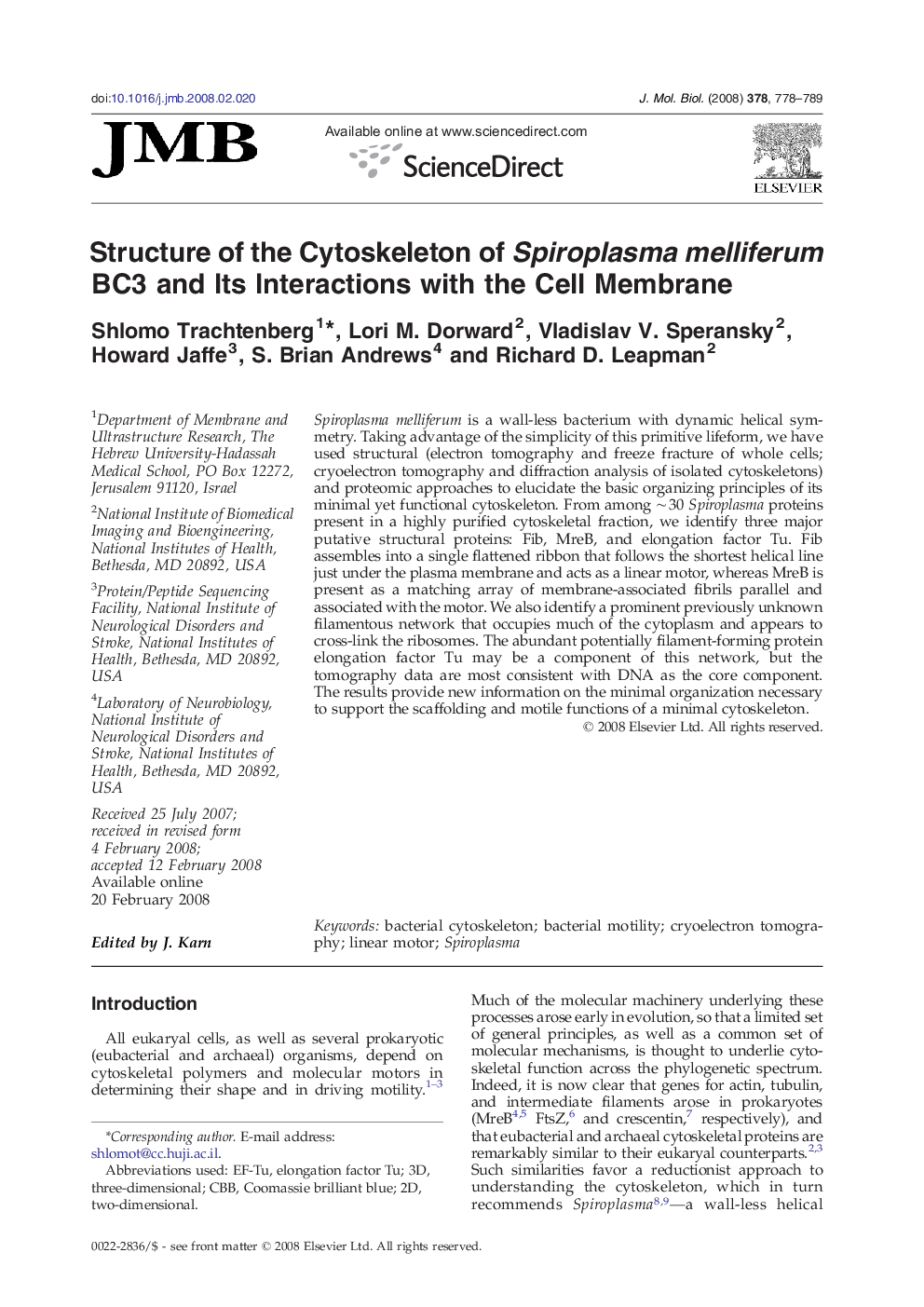| Article ID | Journal | Published Year | Pages | File Type |
|---|---|---|---|---|
| 2187387 | Journal of Molecular Biology | 2008 | 12 Pages |
Spiroplasma melliferum is a wall-less bacterium with dynamic helical symmetry. Taking advantage of the simplicity of this primitive lifeform, we have used structural (electron tomography and freeze fracture of whole cells; cryoelectron tomography and diffraction analysis of isolated cytoskeletons) and proteomic approaches to elucidate the basic organizing principles of its minimal yet functional cytoskeleton. From among ∼ 30 Spiroplasma proteins present in a highly purified cytoskeletal fraction, we identify three major putative structural proteins: Fib, MreB, and elongation factor Tu. Fib assembles into a single flattened ribbon that follows the shortest helical line just under the plasma membrane and acts as a linear motor, whereas MreB is present as a matching array of membrane-associated fibrils parallel and associated with the motor. We also identify a prominent previously unknown filamentous network that occupies much of the cytoplasm and appears to cross-link the ribosomes. The abundant potentially filament-forming protein elongation factor Tu may be a component of this network, but the tomography data are most consistent with DNA as the core component. The results provide new information on the minimal organization necessary to support the scaffolding and motile functions of a minimal cytoskeleton.
